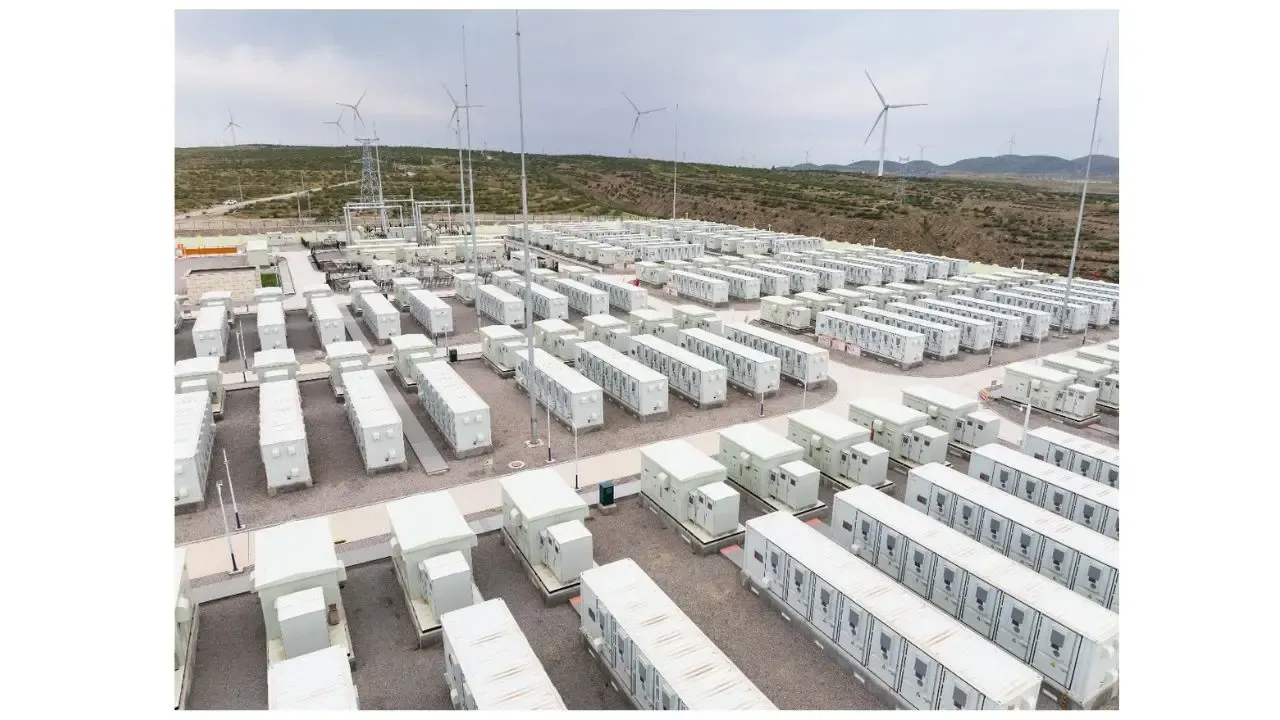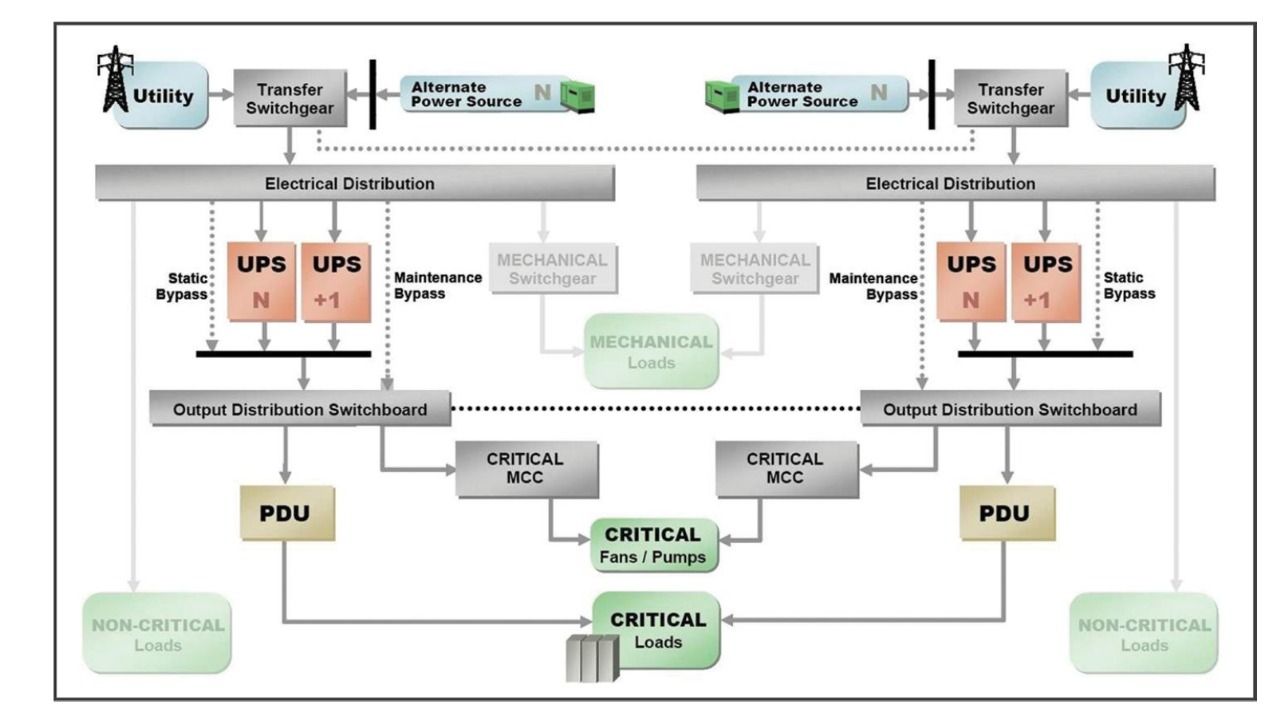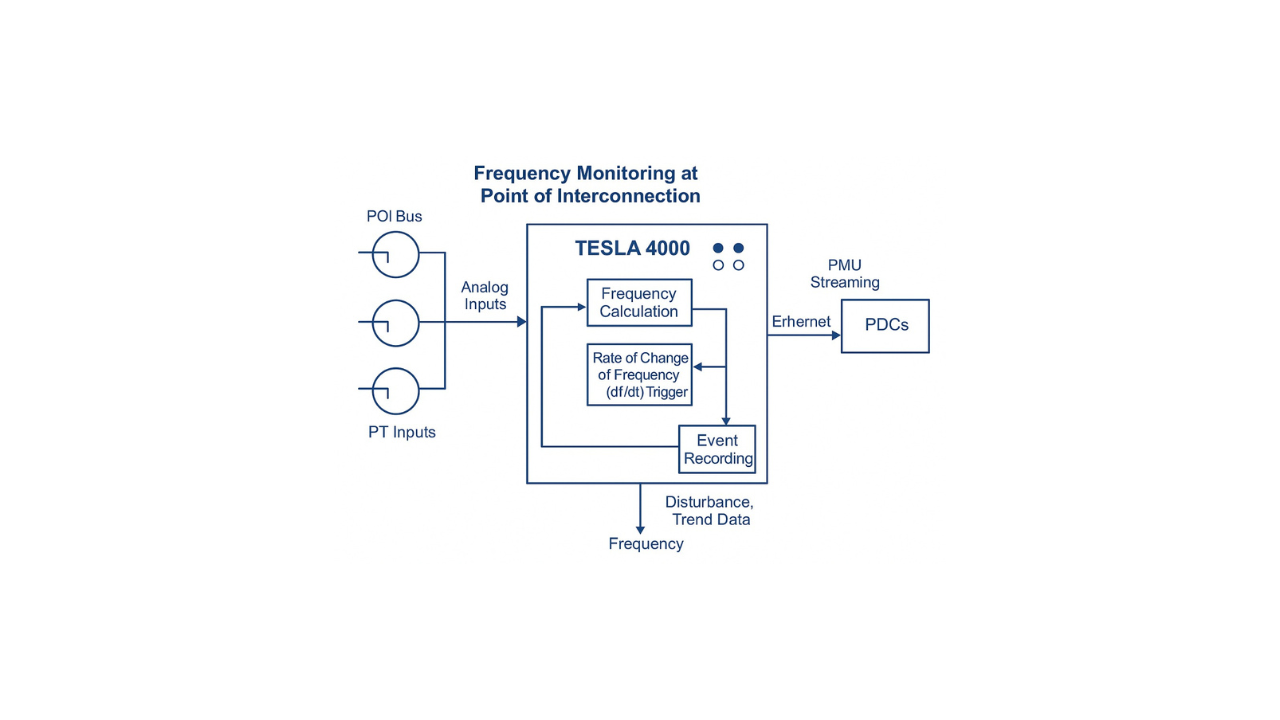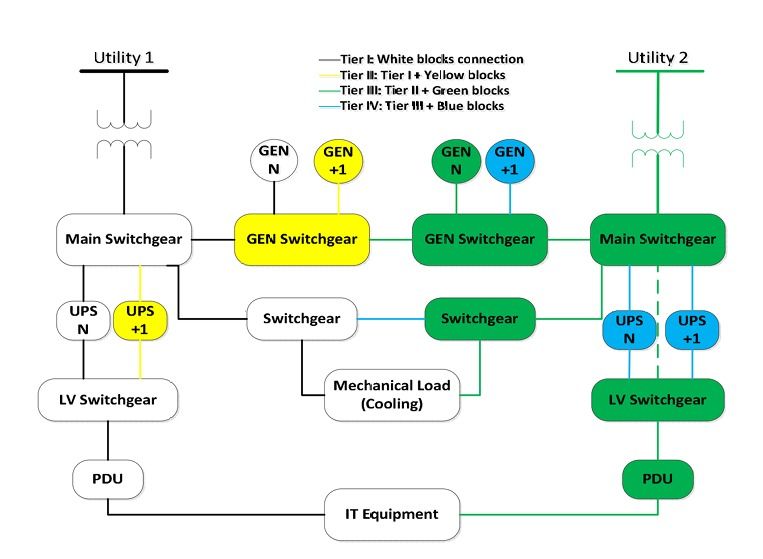A Coordinated Electric System Interconnection Review—the utility’s deep-dive on technical and cost impacts of your project.
Challenge: Frequent false tripping using conventional electromechanical relays
Solution: SEL-487E integration with multi-terminal differential protection and dynamic inrush restraint
Result: 90% reduction in false trips, saving over $250,000 in downtime
ERCOT Reactive Capability Testing: Compliance, CURL, and Best Practices Explained
July 24, 2025 | Blog
Introduction
In the ERCOT (Electric Reliability Council of Texas) power market, Reactive Capability Testing is critical to ensuring that generation resources provide sufficient Voltage Support Service (VSS) and maintain full compliance with ERCOT’s Nodal Protocols. This testing confirms a generator’s ability to supply or absorb reactive power and supports grid stability during real-time operations and seasonal planning.
At
Keentel Engineering, we deliver expert guidance to power producers, IPPs, and renewable energy developers navigating ERCOT’s evolving compliance mandates—including Corrected Unit Reactive Limits (CURL) and Unit Reactive Limits (URL) verification. Our engineering team helps clients align with all telemetry, RARF, and NDCRC submission requirements while avoiding costly rejections or resubmissions.
In this guide, we break down ERCOT’s reactive testing process based on the most recent workshop presentations and formal documents. Supported by Keentel’s field-tested insights, this article serves as a step-by-step roadmap for CURL testing, telemetry validation, NDCRC updates, and ERCOT performance compliance—all tailored for today’s grid-connected generation units.
Understanding the Foundation of Reactive Capability Testing
Reactive Capability Testing is a critical assessment designed to verify a generator’s ability to absorb or supply reactive power under predefined grid conditions. According to ERCOT Nodal Protocols, any generation unit with a gross capacity exceeding 20 MVA must demonstrate the capability to deliver Voltage Support Service (VSS). This is accomplished through controlled tests conducted at the generator’s maximum net real power output and under +/- 0.95 power factor setpoints.
ERCOT structures its testing process using three core documents that translate compliance theory into field-ready execution:
- Data Notes – Clarify required reactive power measurements such as metered MVAR at generator terminals, auxiliary loads, and high-side GSU observations.
- Instructions for Testing – Define standardized procedures for lagging (over-excited) and leading (under-excited) test execution.
- Workshop Presentations – Align regulatory interpretations with CURL submission workflows and validation steps.
These documents ensure that
generation resources are grid-ready and compliant across planning, real-time, and emergency conditions. For deeper technical evaluations of reactive performance in bulk power systems, see
Power System Studies.
URL vs. CURL – Demystifying ERCOT’s Reactive Limits
In ERCOT’s modeling and compliance ecosystem, two key terms define reactive capabilities: URL (Unit Reactive Limit) and CURL (Corrected Unit Reactive Limit). Though often referenced together, they serve distinct operational roles.
- URL refers to the net reactive power limit a generator is expected to deliver, typically derived from nameplate or theoretical models. This value supports EMS configurations, day-ahead planning, and control room expectations.
- CURL represents the gross reactive capability verified through actual field testing. Unlike URL, CURL reflects the true, validated MVAR performance under live conditions, making it more accurate for seasonal planning and operational reliability.
According to Nodal Operating Guide 3.3.2, CURL values are required for accurate EMS modeling, voltage security assessments, and contingency analyses. These values serve as the definitive input for system-wide voltage support planning.
Telemetry and Data Requirements for ERCOT Compliance
Accurate telemetry is the backbone of any successful Reactive Capability Test. ERCOT’s Data Notes clearly outline the telemetry and reporting requirements to ensure test credibility and regulatory alignment:
- Metered data must report both gross megawatts (MW) and megavars (MVAR).
- Inverter-Based Resources (IRRs) are required to measure and submit data from the collector bus.
- All recorded values on the high side of the Generator Step-Up (GSU) transformer must correlate with existing historical telemetry.
Furthermore, the NDCRC (Nodal Data Collection and Review Center) form must include consistent and verified data entries. Any significant deviation between reported and historical telemetry can result in test rejection by ERCOT.
The CURL submission also requires six consistent operating data points for each unit. Once submitted, these values are integrated into ERCOT’s planning models and must remain unchanged unless new testing is conducted. Proper configuration of telemetry is essential for ensuring alignment with grid modeling, EMS, and reliability studies. For telemetry integration support and real-time system visibility, explore SCADA & RTU Engineering Services.
Coordinated vs. Non-Coordinated Testing – Choosing the Right Path
ERCOT Reactive Capability Testing can be executed through either coordinated or non-coordinated methods, depending on the unit’s ability to meet reactive performance thresholds.
Non-Coordinated Tests
- Require at least 48-hour advance notice to ERCOT and the Transmission Service Provider (TSP).
- ERCOT/TSP are not obligated to adjust system voltage conditions.
- Only suitable when units are reasonably expected to meet 90% of the submitted capability curve.a
Coordinated Tests
- Triggered when test results fall beyond 10% deviation from submitted URL or CURL values.
- Require active involvement from ERCOT and TSP to adjust voltage conditions at the Point of Interconnection (POI).
- Ideal for initial commissioning, major upgrades, or units with operational constraints.
Choosing the correct testing path is vital to avoid rejections or delays. When in doubt, engaging ERCOT and the TSP early can streamline coordination and improve test reliability.
Interpreting ERCOT’s Instructions for Testing
ERCOT’s “Instructions for Testing” document specifies two primary types of reactive power tests based on generator type and loading conditions:
Lagging Test (Over-Excited Mode)
- Conducted at >60% of High Sustained Limit (HSL) for IRR units.
- Conducted at >95% of HSL for Thermal Units.
Leading Test (Under-Excited Mode)
- Conducted at <60% of HSL for IRRs.
- Conducted under low-load conditions for Thermal Units.
Importantly, each unit’s test results must fall within 90% of the submitted reactive capability curve. If not, a coordinated test becomes mandatory.
These procedures ensure consistency between field performance and ERCOT’s planning assumptions, reducing the risk of modeling errors and compliance flags.
NDCRC Submission and RARF Update Process
Once the Reactive Capability Testing is completed, results must be formally submitted through the NDCRC (Nodal Data Collection and Review Center) platform. ERCOT typically reviews and either approves or rejects the submission within 2 to 4 weeks.
Upon approval,
Resource Entities are required to update their
Resource Asset Registration Form (RARF) within
10 business days to ensure system-wide modeling accuracy.
Key RARF updates include:
- Maximum Net MW output
- Maximum Net MVAR (lead and lag)
- Gross Reactive Output based on CURL testing
- Telemetry verification and confirmation
These data points are critical inputs for:
- Real-Time Grid Operations
- EMS (Energy Management System) Modeling
- Voltage Security Assessment Tool (VSAT)
- Seasonal Load Flow and Planning Models
To ensure RARF updates are correctly implemented and synced with your DER telemetry, Keentel offers full Owner’s Engineer Services that include RARF advisory, EMS integration, and system validation support.
Common Pitfalls to Avoid and Best Practices to Follow
While conducting reactive capability testing, teams often encounter avoidable issues that compromise data accuracy or lead to test rejection. Here are the most frequent pitfalls and proven mitigation strategies:
Common Pitfalls
- CURL and telemetry misalignment due to outdated data or instrumentation errors.
- Failure to request a coordinated test in cases of operational limitations.
- Incomplete or inaccurate NDCRC submissions, leading to delayed approvals.
Best Practices
- Cross-validate telemetry with historical real-time data before submitting results.
- Use the generator’s D-curve from the manufacturer as a baseline reference.
- Notify ERCOT and the TSP early to initiate a coordinated test when needed.
- Adhere strictly to the HSL testing thresholds specified for your resource type.
Following these best practices not only streamlines ERCOT compliance but also improves the reliability of system modeling and planning.
Conclusion – Why Reactive Testing Matters
Reactive Capability Testing is not just a compliance requirement—it’s an essential tool for maintaining grid stability, voltage reliability, and resource responsiveness. By adhering to ERCOT’s protocols for CURL, URL, telemetry integration, and timely NDCRC submissions, power producers can ensure both operational accuracy and regulatory alignment.
This guide combines insights from the ERCOT Workshop Presentation, Data Notes, and Instructions for Testing to help stakeholders implement compliant and field-ready testing workflows.
Whether you're a generation asset operator, developer, or compliance engineer, mastering this process will enhance both your system’s performance and your alignment with ERCOT’s evolving grid requirements.
Frequently Asked Questions (FAQs)
What’s the difference between URL and CURL in ERCOT testing?
URL (Unit Reactive Limit) is a theoretical, nameplate-based net reactive power value, while CURL (Corrected Unit Reactive Limit) is derived from actual field testing and represents the gross MVAR capability of the unit.
Why are coordinated tests important?
Coordinated tests allow ERCOT and the Transmission Service Provider (TSP) to modify system voltage conditions, which is essential when a unit cannot meet reactive targets under normal (non-coordinated) conditions.
What telemetry data is required during testing?
Units must report gross MW and MVAR. IRR units must provide measurements from the collector bus, and all telemetry should match historical and EMS data to ensure approval.
What are HSL requirements for testing?
- Lagging Test: >60% HSL for IRR, >95% for Thermal units
- Leading Test: <60% HSL for IRR, low-load conditions for Thermal units
How frequently must reactive capability testing be performed?
ERCOT requires testing every two years or upon request to validate continued compliance.
What if NDCRC submission data conflicts with telemetry?
ERCOT may reject the test if discrepancies exist between submitted and historical telemetry data.
Can ERCOT force a unit online just for testing?
No, ERCOT cannot require generators to start up solely for the purpose of reactive capability testing.
Why is updating the RARF important?
It ensures tested values (Max MW, MVAR, CURL) are reflected in ERCOT’s EMS and planning models for accurate operational forecasting.
What’s the approval timeline for NDCRC forms?
ERCOT typically reviews and responds within 2 to 4 weeks of submission.
How is CURL used in system modeling?
CURL values are integrated into tools like EMS, VSAT, and seasonal planning studies to maintain grid reliability.
Where should IRR telemetry be measured during testing?
At the collector bus, and only when static VAR compensators or capacitor banks are deactivated.
What are ERCOT’s reactive power capability requirements?
Units >20 MVA must support ±0.95 power factor (PF) at the Point of Interconnection (POI).
Who must be notified before testing?
ERCOT and the TSP must be notified at least 48 hours in advance for all non-coordinated tests.
What details should be included in the test notification?
Include test date, expected CURL, net MVAR levels, and MW output at the time of testing.
Can CURL change after commercial operation begins?
Yes. If future tests yield different results, a new CURL must be submitted and reflected in the RARF.
Which ERCOT tools use CURL data?
CURL is utilized in Real-Time EMS, VSAT, and Seasonal Study Models.
Do all generation types follow the same rules?
Yes, any unit with a gross capacity over 20 MVA connected to the ERCOT grid must follow the same testing requirements.
How does ERCOT validate reactive test submissions?
By comparing NDCRC form data to telemetry logs and ensuring consistency across all data points.
What if the unit cannot reach leading or lagging power levels?
You must request a coordinated test to meet the capability requirements.
Is CURL submission mandatory?
Yes. It is essential for system modeling, compliance validation, and operational forecasting.
Is the manufacturer’s D-curve required during testing?
It’s not mandatory but is strongly recommended as a baseline for comparing actual vs. expected performance.
How many data points must be submitted for CURL?
Each unit must report six consistent values as outlined in the CURL submission template.
Are reactive testing results publicly available?
No, test results are not published but are subject to ERCOT audits.
Can static devices be adjusted during non-coordinated tests?
No. Voltage support devices must remain fixed during non-coordinated testing to avoid test invalidation.
Ready to Streamline Your ERCOT Reactive Capability Testing?
Book a Consultation with our grid compliance engineers and get audit-ready with confidence.
👉 Contact Keentel Engineering or explore our full NERC Compliance Services.

About the Author:
Sonny Patel P.E. EC
IEEE Senior Member
In 1995, Sandip (Sonny) R. Patel earned his Electrical Engineering degree from the University of Illinois, specializing in Electrical Engineering . But degrees don’t build legacies—action does. For three decades, he’s been shaping the future of engineering, not just as a licensed Professional Engineer across multiple states (Florida, California, New York, West Virginia, and Minnesota), but as a doer. A builder. A leader. Not just an engineer. A Licensed Electrical Contractor in Florida with an Unlimited EC license. Not just an executive. The founder and CEO of KEENTEL LLC—where expertise meets execution. Three decades. Multiple states. Endless impact.
Services

Let's Discuss Your Project
Let's book a call to discuss your electrical engineering project that we can help you with.

About the Author:
Sonny Patel P.E. EC
IEEE Senior Member
In 1995, Sandip (Sonny) R. Patel earned his Electrical Engineering degree from the University of Illinois, specializing in Electrical Engineering . But degrees don’t build legacies—action does. For three decades, he’s been shaping the future of engineering, not just as a licensed Professional Engineer across multiple states (Florida, California, New York, West Virginia, and Minnesota), but as a doer. A builder. A leader. Not just an engineer. A Licensed Electrical Contractor in Florida with an Unlimited EC license. Not just an executive. The founder and CEO of KEENTEL LLC—where expertise meets execution. Three decades. Multiple states. Endless impact.
Leave a Comment
We will get back to you as soon as possible.
Please try again later.
Related Posts















